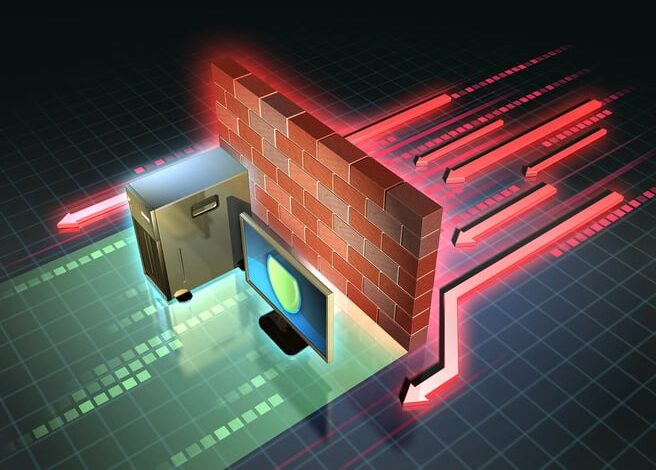What is a Firewall? The Different Firewall Types & Architectures

Firewall protection in today’s computer age is just one of the network security methods utilized by organizations and users. With growing daily cyber attacks, firewalls are the firewall against hacking, viruses, and misuse of information.
The article offers an overview of what firewalls are, types of firewalls, and design to help organizations and IT administrators install the appropriate firewall and network protection.
What is a Firewall?
A firewall is a security software product employed to manage and observe incoming and outgoing network traffic according to a set security policy. It acts as a protective wall between an internal secure network and external non-trusted networks, like the internet, to safeguard against cyber attacks, like hacking, malware, and unauthorized access.
Firewalls are hardware, software, and both and are a necessary component of enterprise and personal network security.
Types of Firewalls
There are several firewalls, and each of them works to protect networks in its own way. Some of the most commonly used ones are:
1. Packet Filtering Firewall
Packet filtering firewall screens data packets at network levels and accepts or rejects them according to pre-defined safety policies such as protocols, ports, and IP addresses.
- Strengths: Stealthy use of resources, simplicity in installation.
- Weaknesses: Very poor protection as packet contents are not screened.
- Applicability: Small business or a single user with default-sized firewall requirements.
2. Stateful Inspection Firewall
A stateful firewall tracks states of ongoing connections and session-based, as opposed to packet-based, decisions on processing network traffic when it handles traffic.
- Advantages: Secure than packet-filtering firewalls.
- Disadvantages: Higher resource consumption.
- Use Case: Enterprise-scale network security with the need to process humongous volumes of traffic.
3. Proxy Firewall (Application Layer Firewall)
A proxy firewall is an intermediary system between the internet and users that inspects traffic at the application level. It inspects packet payloads and not headers.
- Strengths: Prevents external communication from internal systems without the middle device becoming a bottleneck.
- Weaknesses: It interferes with the network as it can do deep packet inspection.
- Use Case: Organizations handling sensitive data, i.e., banking companies.
4. Next-Generation Firewall (NGFW)
A next-generation firewall (NGFW) possesses some native security features like deep packet inspection, intrusion prevention systems (IPS), and malware scanning.
- Pros: Enhanced security features like threat detection through AI.
- Cons: Higher cost and complexity.
- Application: Enterprises with overall network and firewall security requirements.
5. Cloud-Based Firewall
Cloud firewall, or Firewall-as-a-Service (FWaaS), is a cloud firewall offered by a third-party service provider.
- Benefits: Scalable, simple to deploy, and economical.
- Drawbacks: Requires a persistent internet connection in order to operate at its optimum level.
- Use Case: Businesses that utilize cloud applications and remote employees.
Firewall Architectures
Firewall architectures determine the layout of firewalls in a network to provide optimum network security. The most essential architectures are:
1. Bastion Host Architecture
A bastion host is an extremely secure system that is resistant to attack. It’s located at the edge of the network and acts as the sole point of entry for all incoming traffic from outside.
- Advantages: It adds external protection against breaches.
- Disadvantages: Can open inner networks to compromise.
- Use Case: Low-security need for small and medium businesses.
2. Dual-Homed Firewall Architecture
Dual-homed firewall architecture is a two-network interface setup in which one is linked with the inner network and another with the outer network. It compels all traffic to pass through the firewall.
- Advantages: It does not allow direct routing of the inner and outer networks.
- Disadvantages: Single point of failure.
- Use case: Small- to medium-sized enterprises needing strict firewall security policy.
3. Demilitarized Zone (DMZ) Firewall Architecture
A DMZ firewall architecture isolates publicly accessible services (e.g., email and web servers) into another zone, isolated from internal networks.
- Benefits: Shields internal networks but grants external access up to a limit.
- Drawbacks: Requires further firewall configuration.
- Use Case: Public services on behalf of firms with no security breach within the firm.
4. Multi-Layer Firewall Design
Multi-layer firewalls employ more than one firewall and are implemented in various layers of networks to deliver extra firewall and network security.
- Advantages: Provides multiple levels of protection, not point failure.
- Disadvantages: Very costly and challenging to manage.
- Use case: Governments and corporate houses require high-end security.
Best Practices for Firewall Security
In order to achieve maximum effectiveness with firewall security, business organizations should implement the following best practices:
- Regularly update firewall policies to remain in sync with emerging threats.
- Continuously monitor firewall traffic to detect suspicious behaviour in real-time.
- Enforce a Zero Trust paradigm to grant least-privilege access.
- Deploy intrusion prevention systems (IPS) to prevent known attacks.
- Isolate networks to restrict lateral cyber attack movement.
Conclusion
Firewalls are an utmost necessary network security appliance to protect businesses and individuals from cyber attacks. Organizations require information about the type of firewalls—packet filtering to next-generation firewalls—so that they can choose a flawless firewall security appliance. The correct choice of firewall design, i.e., a DMZ or multi-layer firewall, also offers adequate security from cyber attacks. With information about best practices, organizations can secure their network security and firewalls and guard their online data against future attacks.



